Abstract
1. The effect of electrical stimulation of the brain stem on interneurones in the dorsal horn and intermediary region has been investigated in decerebrate cats after partial transection of the spinal cord.
2. Stimuli that effectively depress reflex transmission without giving a primary afferent depolarization inhibit the discharge evoked from the flexor reflex afferents in interneurones.
3. Brain stem stimulation did not give post-synaptic potentials in the great majority of interneurones but effectively depressed the excitatory post-synaptic potentials (EPSPs) and inhibitory post-synaptic potentials (IPSPs) evoked from the flexor reflex afferents in these interneurones.
4. IPSPs were, however, evoked in five of seventy-eight intracellularly recorded interneurones. These five interneurones were monosynaptically activated from primary afferents.
5. It is tentatively postulated that a dorsal reticulospinal system inhibits reflex transmission by giving post-synaptic inhibition in first order interneurones. The results are also discussed in relation to effects on interneurones from other descending pathways.
Full text
PDF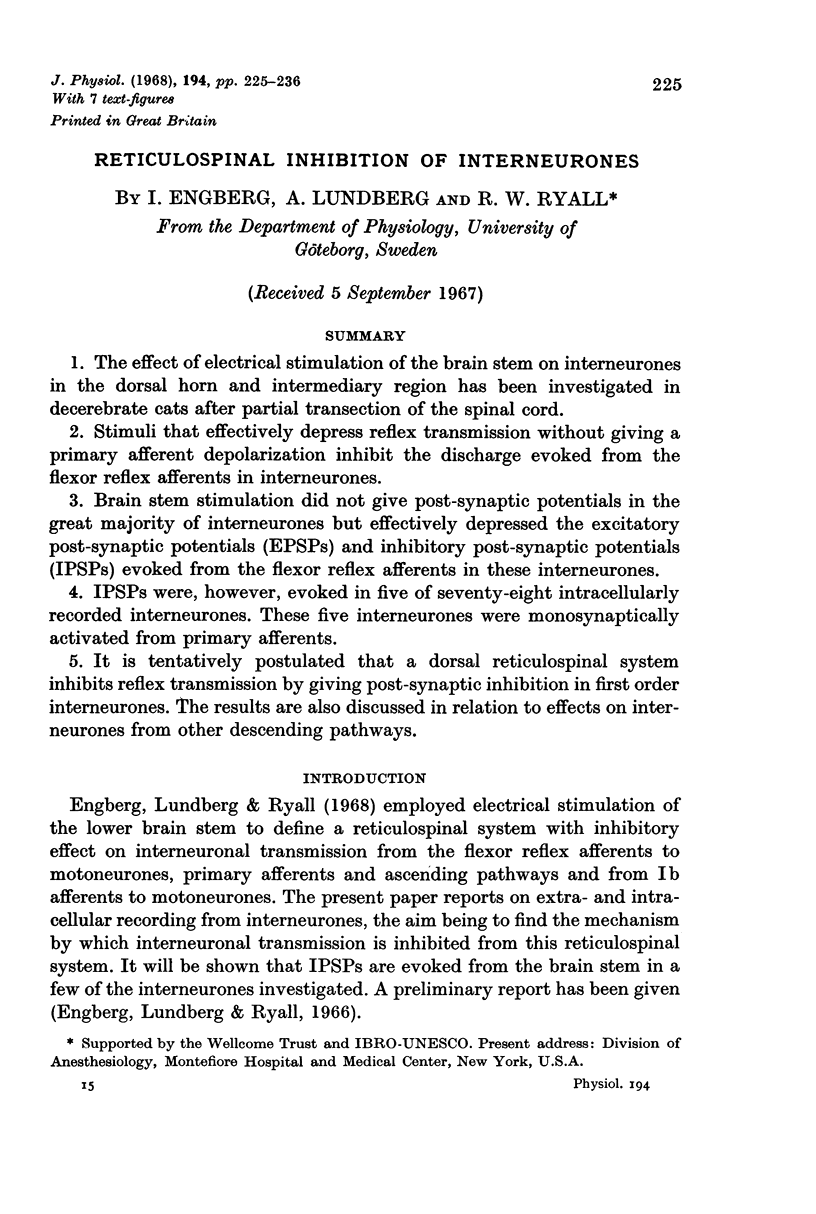
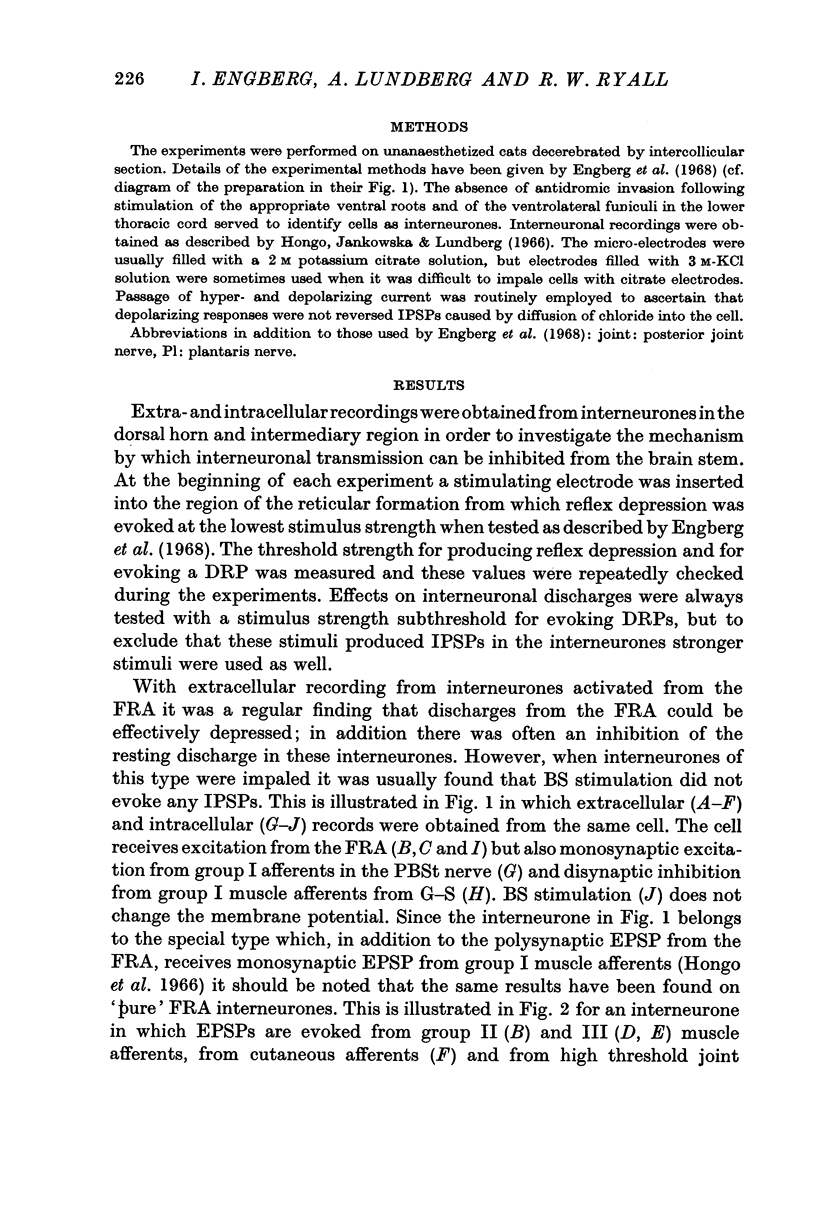
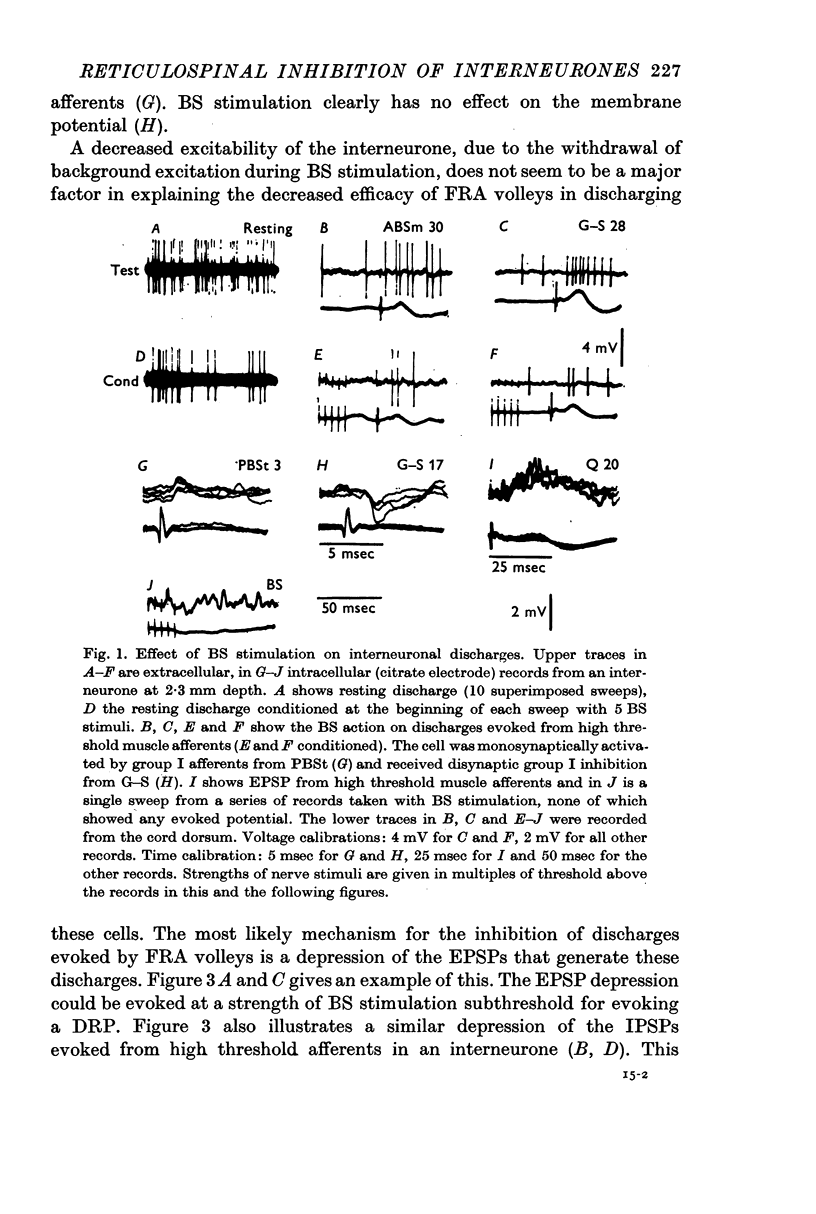
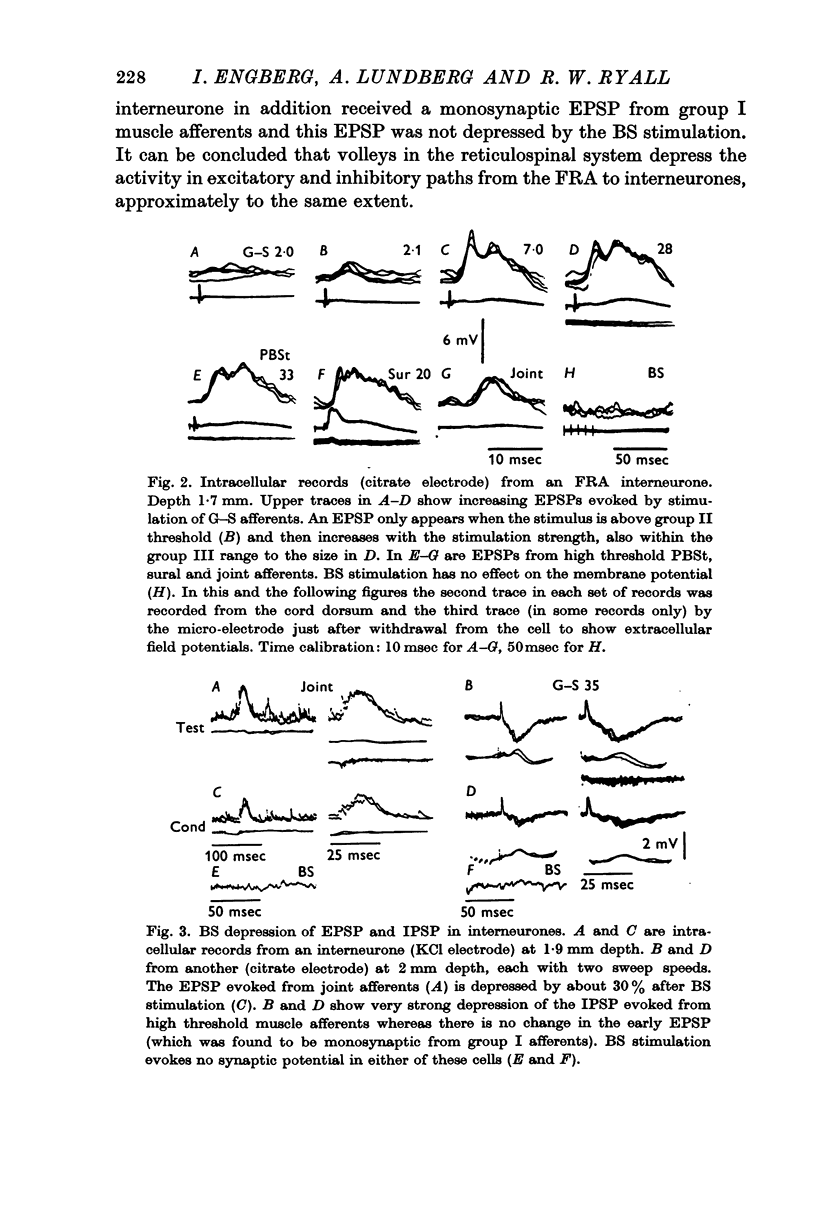
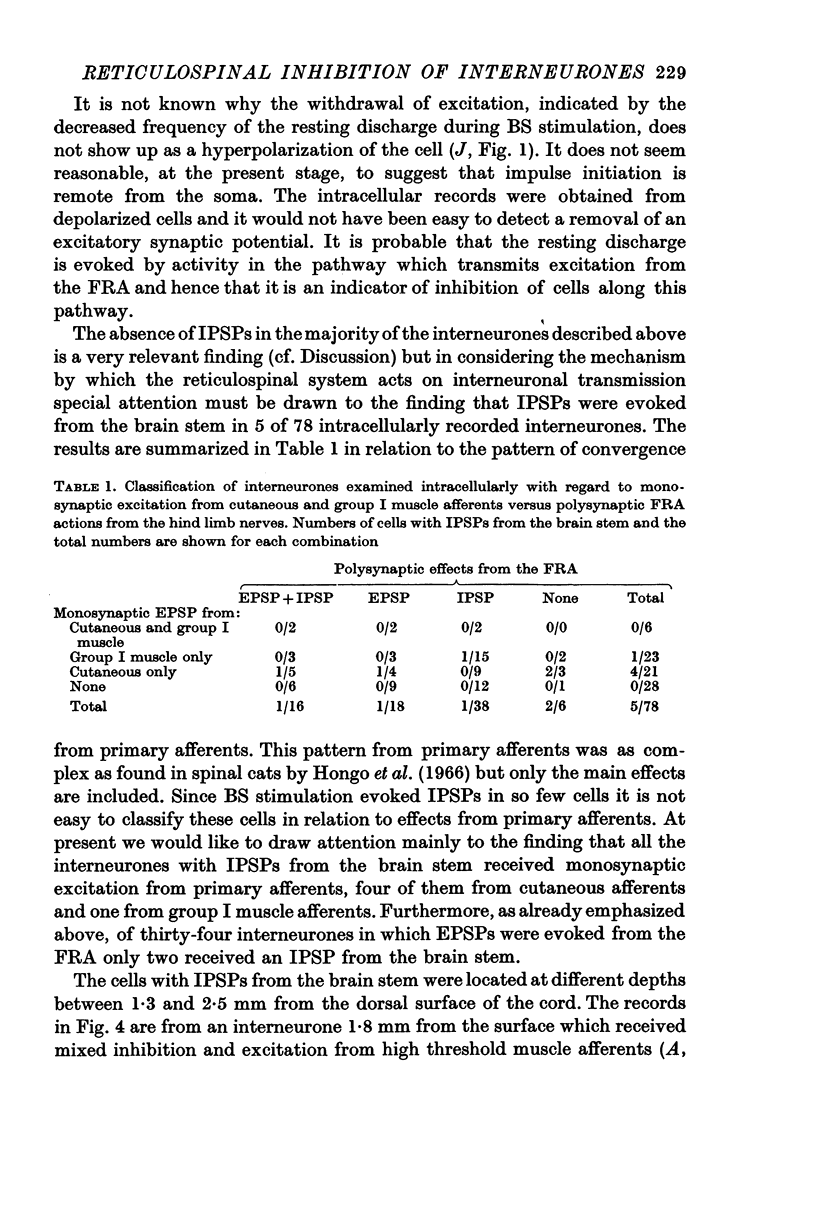
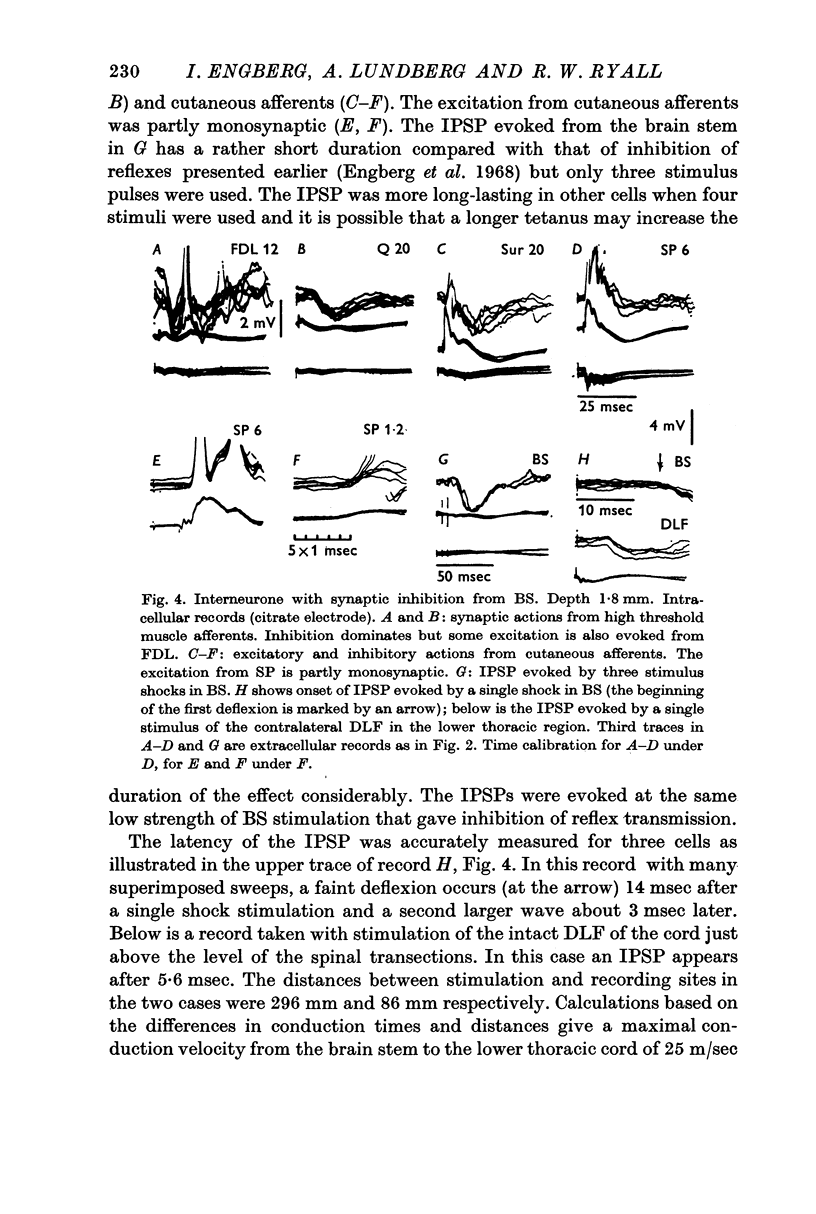
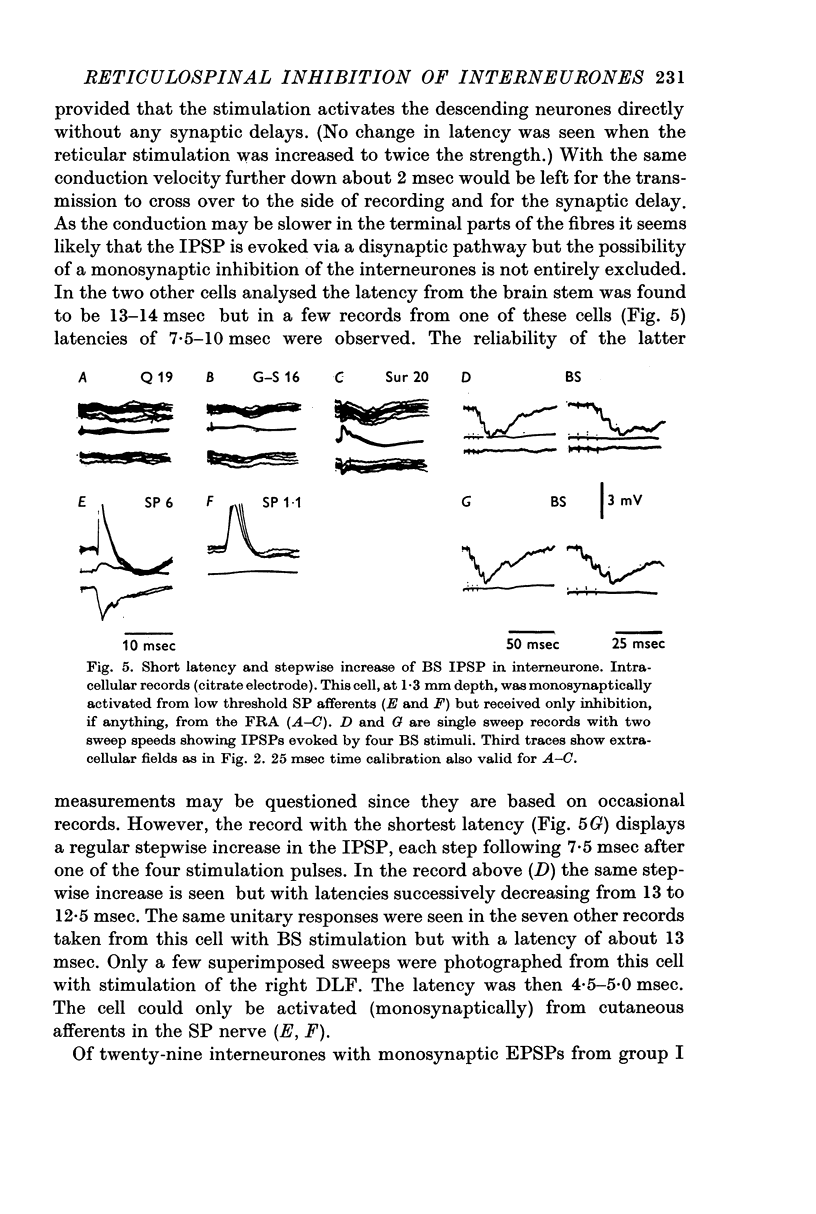
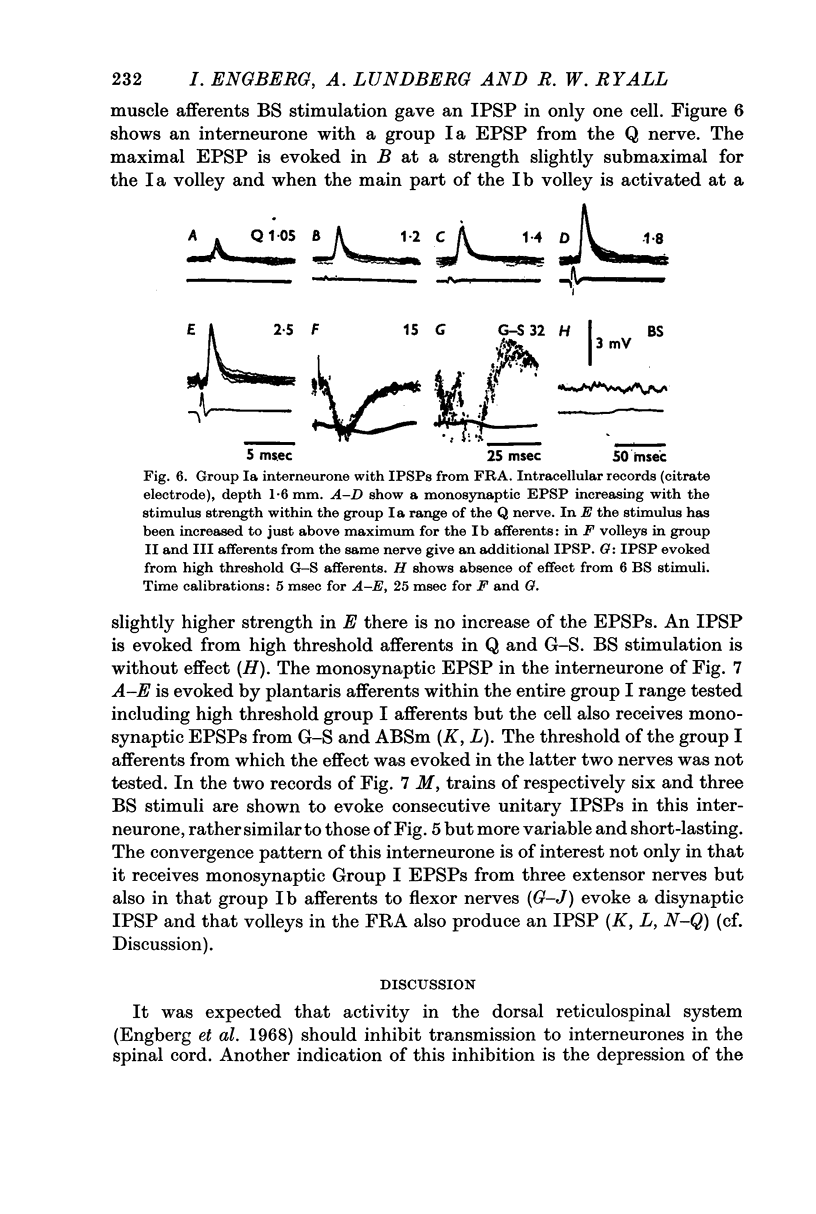
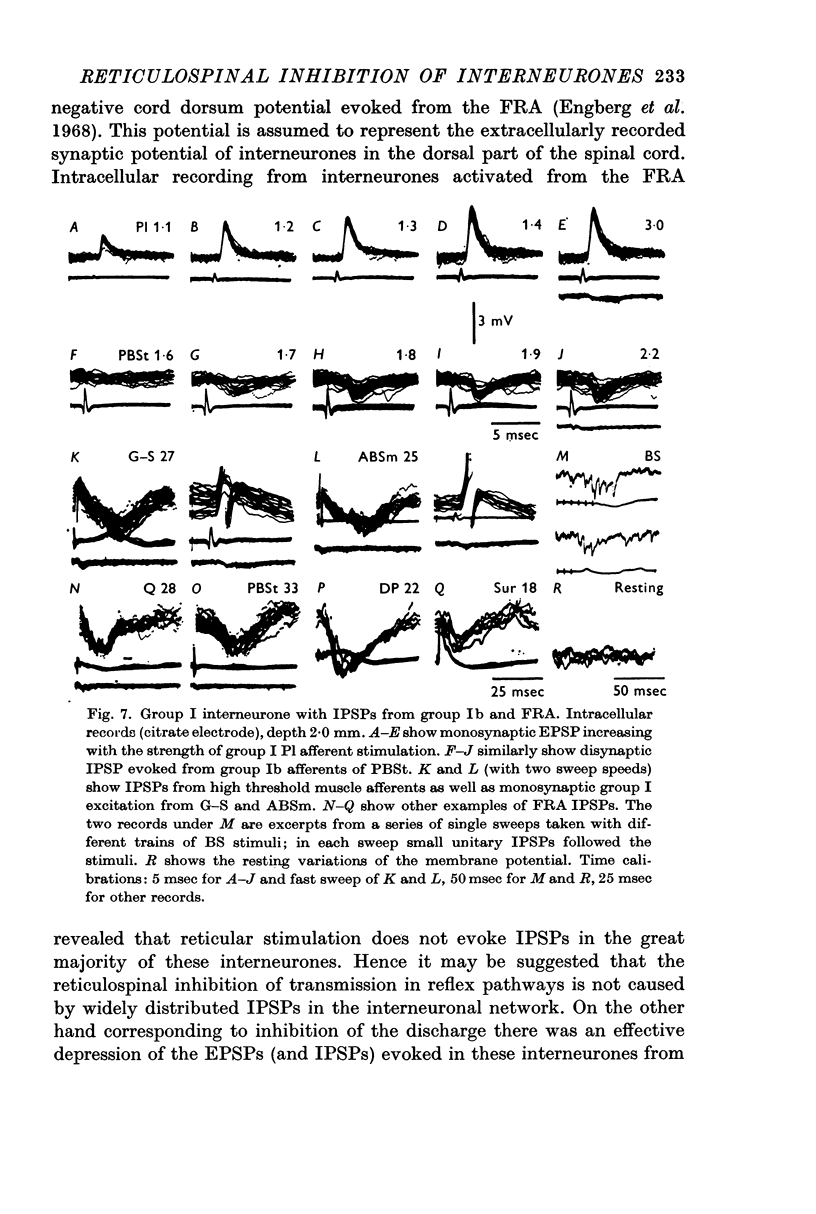
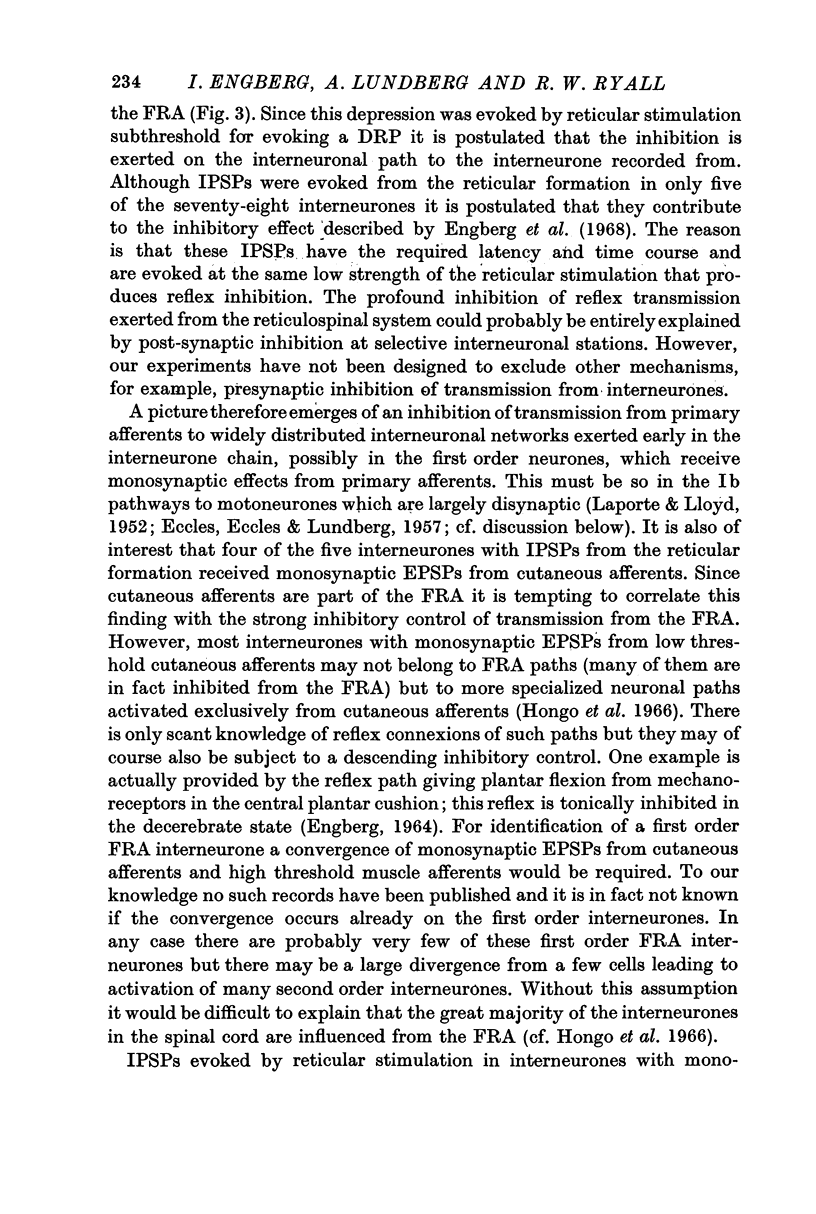
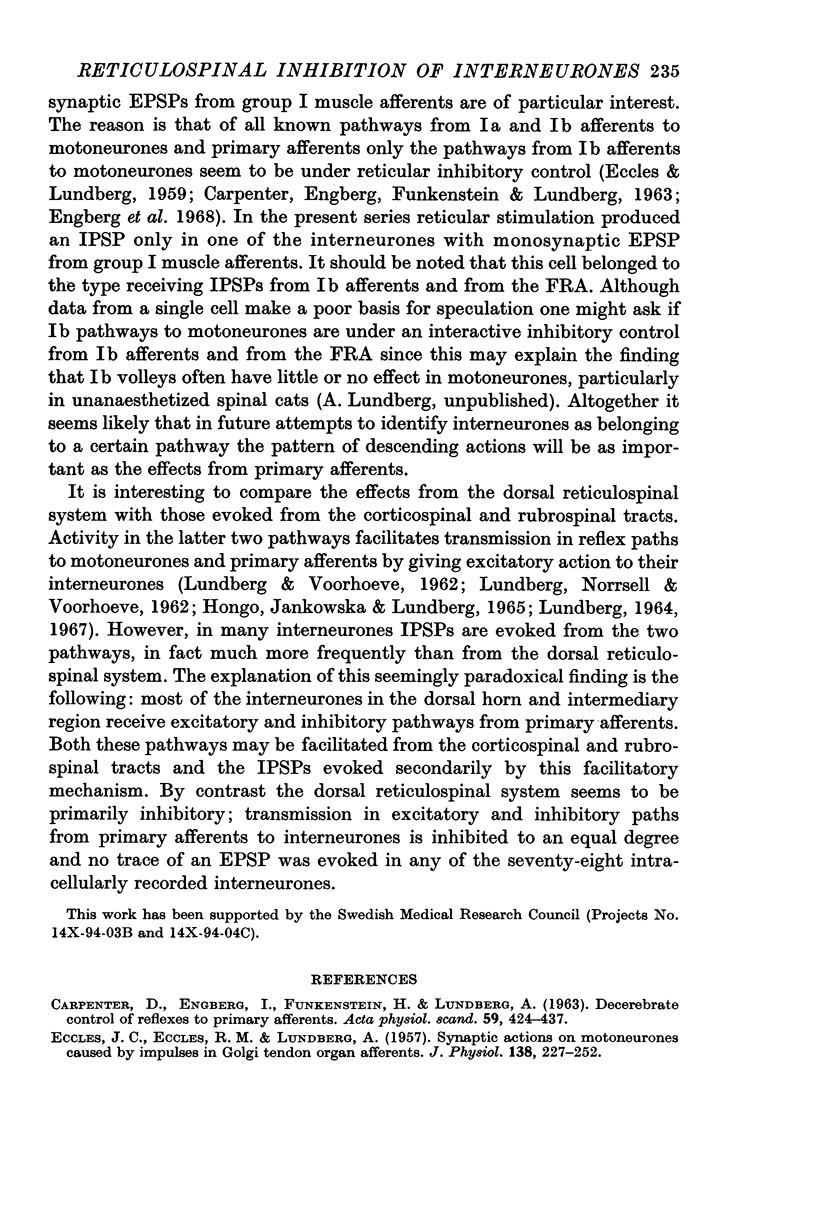
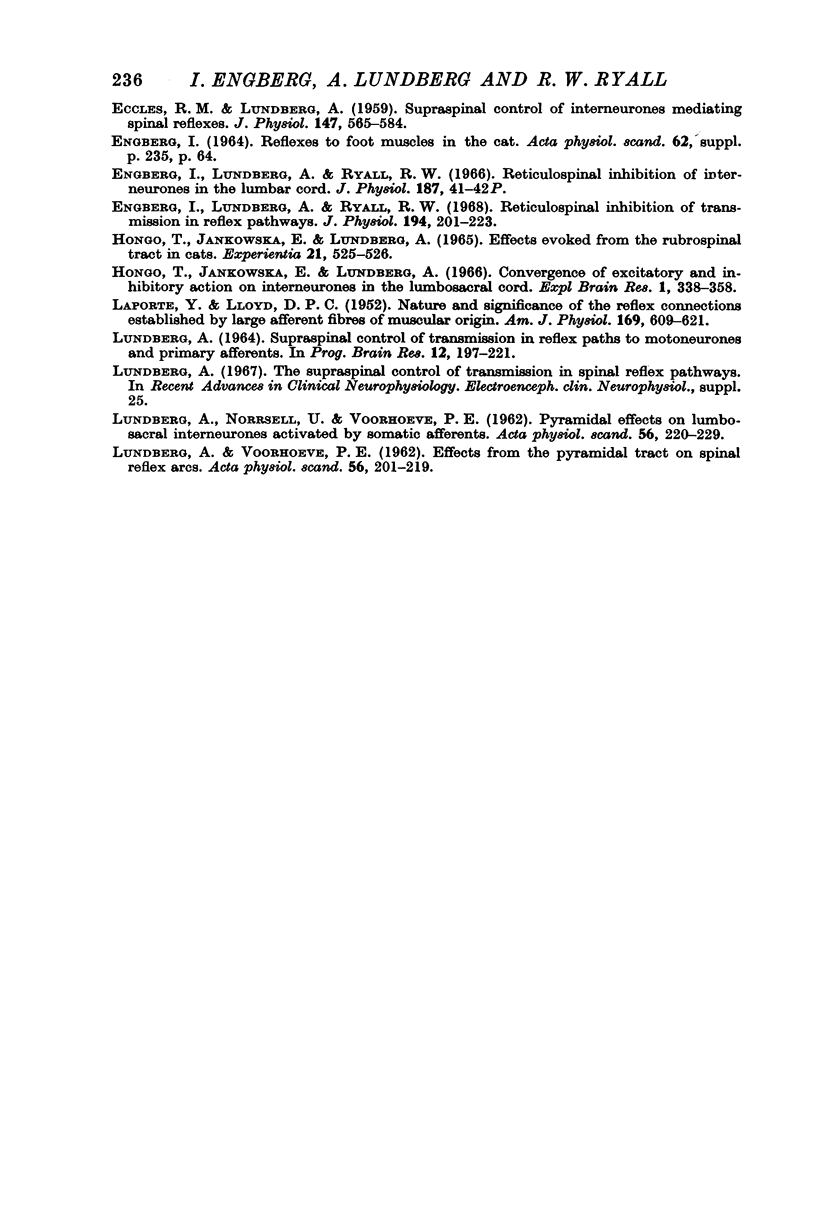
Selected References
These references are in PubMed. This may not be the complete list of references from this article.
- CARPENTER D., ENGBERG I., FUNKENSTEIN H., LUNDBERG A. DECEREBRATE CONTROL OF REFLEXES TO PRIMARY AFFERENTS. Acta Physiol Scand. 1963 Dec;59:424–437. doi: 10.1111/j.1748-1716.1963.tb02758.x. [DOI] [PubMed] [Google Scholar]
- ECCLES J. C., ECCLES R. M., LUNDBERG A. Synaptic actions on motoneurones caused by impulses in Golgi tendon organ afferents. J Physiol. 1957 Sep 30;138(2):227–252. doi: 10.1113/jphysiol.1957.sp005849. [DOI] [PMC free article] [PubMed] [Google Scholar]
- ECCLES R. M., LUNDBERG A. Supraspinal control of interneurones mediating spinal reflexes. J Physiol. 1959 Oct;147:565–584. doi: 10.1113/jphysiol.1959.sp006262. [DOI] [PMC free article] [PubMed] [Google Scholar]
- Engberg I., Lundberg A., Ryall R. W. Reticulospinal inhibition of transmission in reflex pathways. J Physiol. 1968 Jan;194(1):201–223. doi: 10.1113/jphysiol.1968.sp008402. [DOI] [PMC free article] [PubMed] [Google Scholar]
- Hongo T., Jankowska E., Lundberg A. Convergence of excitatory and inhibitory action on interneurones in the lumbosacral cord. Exp Brain Res. 1966;1(4):338–358. doi: 10.1007/BF00237706. [DOI] [PubMed] [Google Scholar]
- Hongo T., Jankowska E., Lundberg A. Effects evoked from the rubrospinal tract in cats. Experientia. 1965 Sep 15;21(9):525–526. doi: 10.1007/BF02138973. [DOI] [PubMed] [Google Scholar]
- LAPORTE Y., LLOYD D. P. C. Nature and significance of the reflex connections established by large afferent fibers of muscular origin. Am J Physiol. 1952 Jun;169(3):609–621. doi: 10.1152/ajplegacy.1952.169.3.609. [DOI] [PubMed] [Google Scholar]
- LUNDBERG A., NORRSELL U., VOORHOEVE P. Pyramidal effects on lumbo-sacral interneurones activated by somatic afferents. Acta Physiol Scand. 1962 Nov-Dec;56:220–229. doi: 10.1111/j.1748-1716.1962.tb02497.x. [DOI] [PubMed] [Google Scholar]
- LUNDBERG A. SUPRASPINAL CONTROL OF TRANSMISSION IN REFLEX PATHS TO MOTONEURONES AND PRIMARY AFFERENTS. Prog Brain Res. 1964;12:197–221. doi: 10.1016/s0079-6123(08)60624-x. [DOI] [PubMed] [Google Scholar]
- LUNDBERG A., VOORHOEVE P. Effects from the pyramidal tract on spinal reflex arcs. Acta Physiol Scand. 1962 Nov-Dec;56:201–219. doi: 10.1111/j.1748-1716.1962.tb02498.x. [DOI] [PubMed] [Google Scholar]


